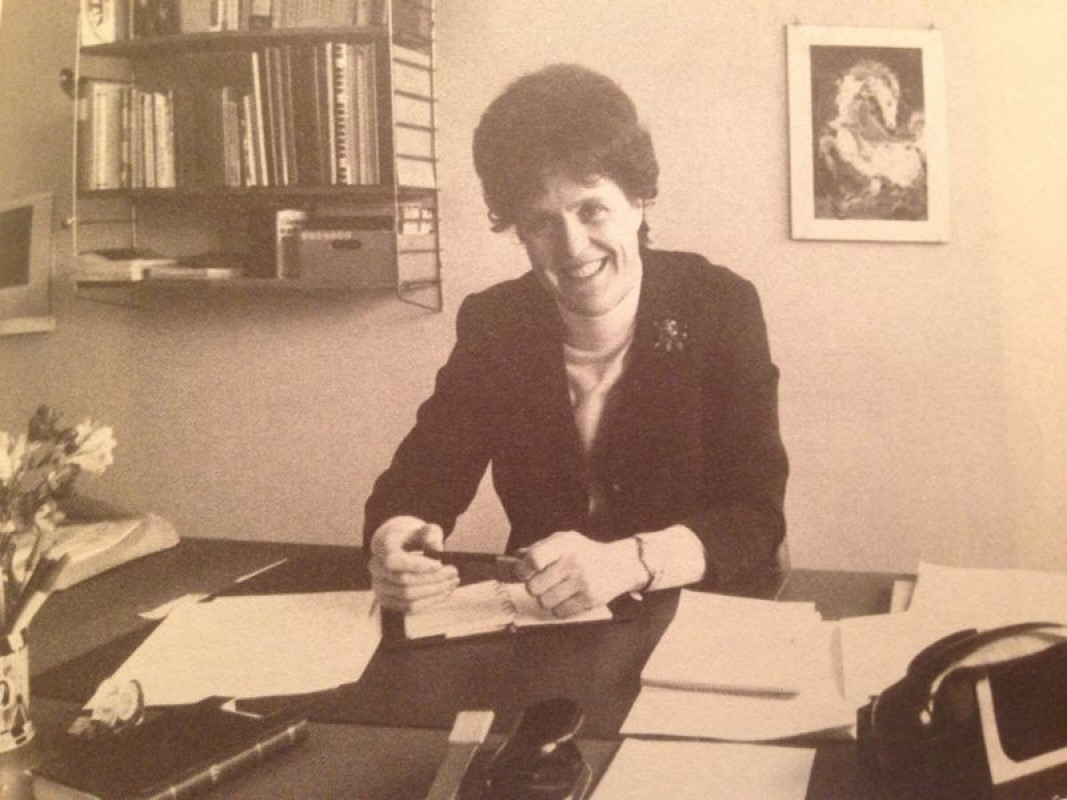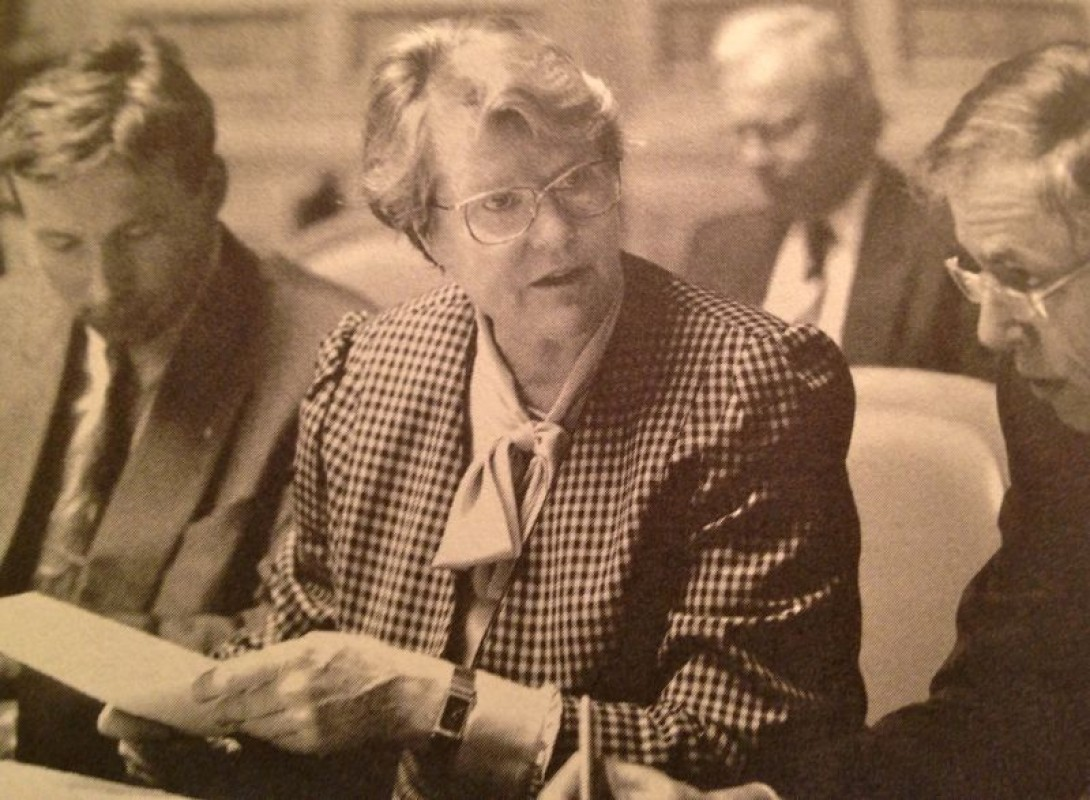On Monday 28 January, the former president of the National Council, Judith Stamm, participated in this year’s first talk in the ‘Salle des pas perdus’ in the Parliament Building, which focused on the consequences of women’s entry into parliament. This provided the opportunity to talk about the 50 years the Lucerne politician has spent fighting for equal representation of the sexes in government institutions.
Judith Stamm was thrilled when Viola Amherd and Karin Keller-Sutter were elected to the Federal Council on 5 December 2018. This was ‘an early Christmas present’, wrote Ms Stamm, who is one of the iconic women politicians on the Seniorweb platform. "Until now, we always had to rely on quotas to justify the election of women to political bodies. As if women were a minority group." At nearly 85, Ms Stamm wonders with hindsight whether people are embracing the principle of gender parity, at least within the government. One might think so, given the efforts made by the parliamentary groups of the Christian Democratic People’s Party (CVP) and the Liberals (FDP) to ensure that two women succeeded Doris Leuthard and Johann Schneider-Amman.
A clearheaded candidate
Ms Stamm knows what she’s talking about: in 1986, she stood as a candidate for the Federal Council to succeed Kurt Furgler and Alfons Egli; she could not accept that the CVP would not put any women candidates forward for the vote of the Federal Assembly. Her courageous campaign was unsuccessful, but heartened her fellow party members.
Proof of her positive impact: in autumn 1998, when Arnold Koller and Flavio Cotti stepped down, the CVP’s list of potential candidates included the names of National Council members Rosmarie Zapfl, Rosmarie Simmen and Judith Stamm, and Ruth Metzler and Rita Roos from the Council of States. The CVP group opted for a double ticket of women for one of the positions, leading to Ruth Metzler’s election in March 1999. Doris Leuthard later succeeded Joseph Deiss.
It was in Judith Stamm’s nature to bring about change and mobilise people around a cause. She never saw herself as a housewife, as her mother was. After receiving a doctorate in law from the University of Zurich, she worked at the Uster District Court. As a woman, she had neither the right to vote nor the right to be elected, so she had no chance of becoming a clerk or a judge, which are political appointments in Switzerland. She then joined the Lucerne police force, where she trained many aspiring police officers before being promoted to the rank of officer. She went on to work as a judge and a juvenile lawyer.

Judith Stamm held her own in the male-dominated Lucerne police force and achieved the rank of lieutenant-colonel in 1967
A pioneer in her canton
Judith Stamm joined the Christian Democratic People’s Party in 1971, the year women were given the right to vote. At 37, she became the first woman to be elected to the Cantonal Council of Lucerne, where she served until 1984.
She was elected to the National Council in 1983, and submitted many written questions and proposals during her four terms of office. She took steps to open government institutions up to women, and to the Swiss abroad. Her motion (86.917) calling for the creation of a federal service to implement the constitutional article on the equal rights of women and men led to the establishment of the Federal Office for Gender Equality in 1988. The Federal Act on Gender Equality came into force eight years later.
 Judith Stamm with her colleagues Leu, Wick and Seiler in 1993 at the National Council
Judith Stamm with her colleagues Leu, Wick and Seiler in 1993 at the National Council
Taking her courage in both hands
During the opening of an exhibition on the biography of Judith Stamm in 2008, Cécile Bühlmann, the former National Councillor (Green Party) from Lucerne, recalled how her progressive CVP colleague stood up to the conservative members of her group at the beginning of her time in the chambers. When she didn’t agree with her fellow party members, she took her courage in both hands and stood to vote alone, as electronic voting was only introduced in 1996. However, over the years, Ms Stamm gained the respect of her group to the point that she was offered the presidency of the National Council at the beginning of the 1996 winter session.
In her inaugural address, Ms Stamm stated that she shared the joy of being elected with her party, her canton and relatives, but above all with many women, from here and elsewhere. "I am only the fourth woman to fill this seat since 1291, since 1848 or, should I say?, since 1971." Ms Stamm added with a nod that the constitutional article providing for maternity insurance had been waiting in the wings for 51 years.
Her successor as president of the National Council, Ernst Leuenberger, a socialist from Solothurn, left the inscription ‘Präsidentin’ (German term for woman president) on the door of his presidential office: "to get an idea of what it feels like when men are subsumed under the word for a woman who does the job."
Entering a men's world in 1971
Upon their arrival under the Dome, the first women elected were subjected to strong pressure to adapt to a male-dominated federal policy. In the first talk held in the lobby on 28 January 2019, the President of the National Council, Marina Carobbio, the first National Councillor Judith Stamm and Professor Fabrizio Gilardi of the University of Zurich shared their knowledge and experience on the influence of women in the Federal Parliament. The discussion also showed that more than one fundamental legislative provision would never have come into being without the involvement of women parliamentarians.
Bibliography: Zeindler, Nathalie (2008): Beherzt und unerschrocken. Wie Judith Stamm den Frauen den Weg ebnete. Zurich: Xanthippe Verlag
